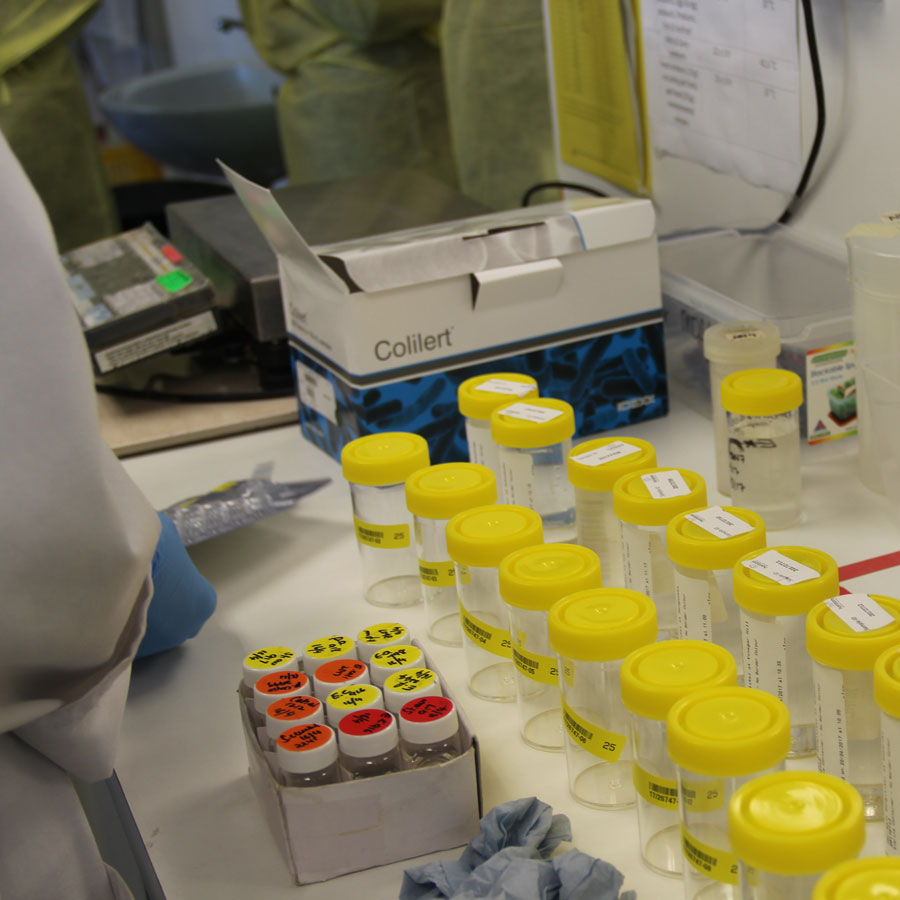E. coli and Enterococci are families of bacteria often found in the lower intestine of people and animals. They are used to indicate the presence of faecal material in waterways.
These are primary indicators for water quality because there is a high correlation between the presence of these bacteria and other waterborne bacteria and viruses, such as Campylobacter, which are hard to test for in their own right. In other words, if you find E. coli or enterococci, there is a high chance there will be the more dangerous (and hard to test for) microbes as well.
The status and trends for bacteria from the State of the Environment programme can be found on the LAWA website.
Horizons Regional Council recently commissioned Land Water People (LWP) to assess water quality state and trends across the region, you can download the full report here.
Te whakahaere huakita i te awa o Manawatū me ōna manga
Managing bacteria in the Manawatū Catchment
As with many of the priority areas identified in the Action Plan, different activities undertaken have a positive impact on bacteria. The main sources of bacteria in the awa are discharges from wastewater treatment plants, town stormwater and industry. To improve water quality in the Manawatū Catchment a huge effort has been made to reduce the number and impact of these discharges.
- In 1997 there were 334 consented discharges of dairy shed effluent to surface water across the Manawatū. By 2012, there were no longer any dairy sheds in the catchment discharging effluent directly to waterways.
- Major upgrades have been made to wastewater treatment plants throughout the catchment through the Accord and the Fresh Start for Freshwater Clean-up Fund. These include wastewater treatment plants in Woodville, Dannevirke, Pāhiatua, Kimbolton, Feilding and Shannon. Over time these upgrades are expected to improve water quality. They are measured regularly through downstream monitoring of these discharges.
- In Palmerston North, there has been major effort to reduce the number of point source discharges and amalgamate them into one source; allowing for more cost-effective and efficient wastewater treatment.
Another key source of bacteria is direct access of farm animals to waterways. Since the signing of the Accord, over 600km of stream fencing has been put in place in the Manawatū Catchment, excluding sheep and cattle from waterways. Much of this also includes planting of native riparian margins, which has many benefits, acting as a natural buffer between the land and the awa. As the plants grow they help filter bacteria and nutrients before they reach the water. Alongside this is the work being carried out by the dairy sector to exclude stock from waterways under the Dairy Clean Streams Accord. This work is the result of the community working together to make change and is only possible due to the huge support of landowners. If you’re a landowner and would like some advice about what you could do get in touch at info@manawaturiver.co.nz.
Check out the 2016 – 2021 Action Plan to find out more about the goals of the Accord and what is being done or visit the See Progress Map to see what’s been happening in your area.


